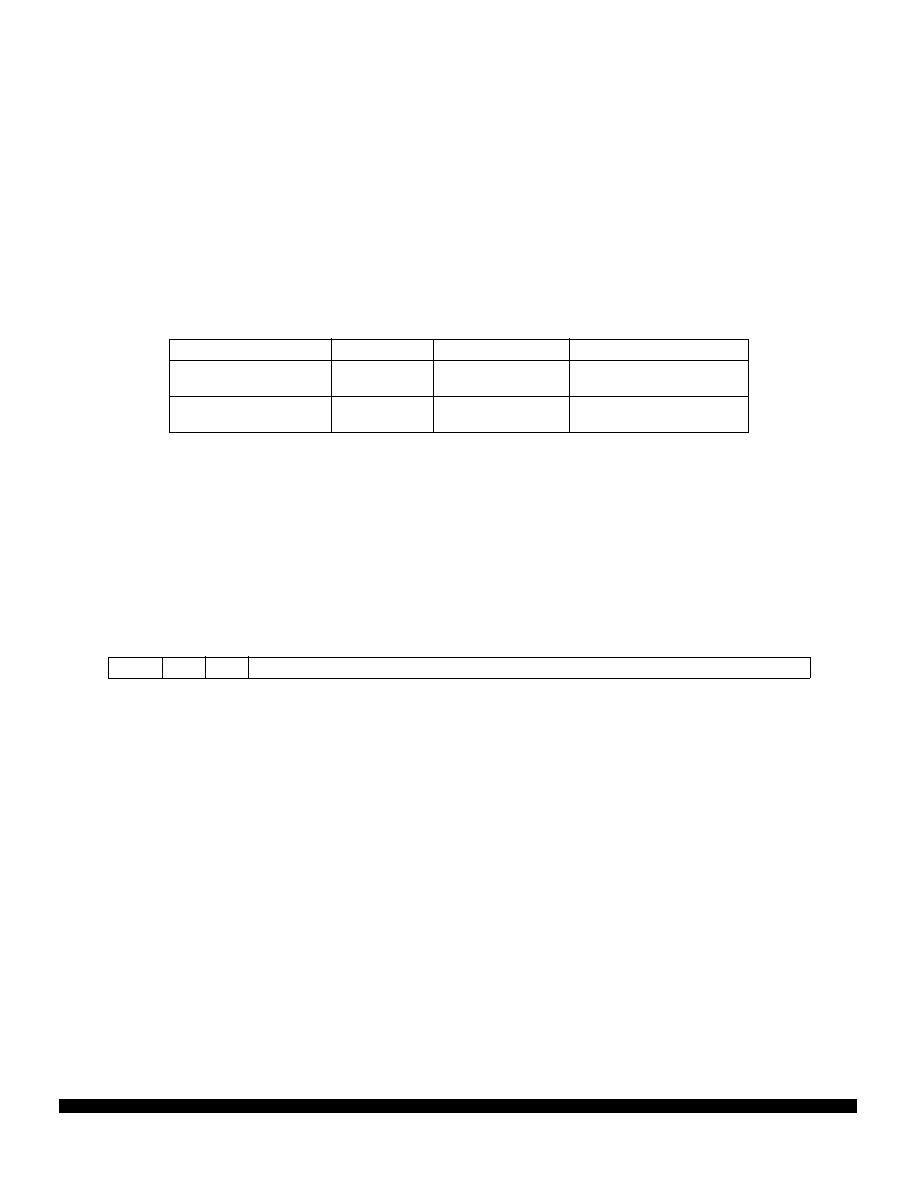- 您現(xiàn)在的位置:買賣IC網(wǎng) > PDF目錄45211 > MC68332GVPV16 (FREESCALE SEMICONDUCTOR INC) 32-BIT, 16 MHz, MICROCONTROLLER, PQFP144 PDF資料下載
參數(shù)資料
| 型號: | MC68332GVPV16 |
| 廠商: | FREESCALE SEMICONDUCTOR INC |
| 元件分類: | 微控制器/微處理器 |
| 英文描述: | 32-BIT, 16 MHz, MICROCONTROLLER, PQFP144 |
| 封裝: | 20 X 20 MM, 1.40 MM HEIGHT, 0.50 MM PITCH, LQFP-144 |
| 文件頁數(shù): | 87/109頁 |
| 文件大小: | 787K |
| 代理商: | MC68332GVPV16 |
第1頁第2頁第3頁第4頁第5頁第6頁第7頁第8頁第9頁第10頁第11頁第12頁第13頁第14頁第15頁第16頁第17頁第18頁第19頁第20頁第21頁第22頁第23頁第24頁第25頁第26頁第27頁第28頁第29頁第30頁第31頁第32頁第33頁第34頁第35頁第36頁第37頁第38頁第39頁第40頁第41頁第42頁第43頁第44頁第45頁第46頁第47頁第48頁第49頁第50頁第51頁第52頁第53頁第54頁第55頁第56頁第57頁第58頁第59頁第60頁第61頁第62頁第63頁第64頁第65頁第66頁第67頁第68頁第69頁第70頁第71頁第72頁第73頁第74頁第75頁第76頁第77頁第78頁第79頁第80頁第81頁第82頁第83頁第84頁第85頁第86頁當(dāng)前第87頁第88頁第89頁第90頁第91頁第92頁第93頁第94頁第95頁第96頁第97頁第98頁第99頁第100頁第101頁第102頁第103頁第104頁第105頁第106頁第107頁第108頁第109頁

MC68332
MOTOROLA
MC68332TS/D
79
6.6 SCI Submodule
The SCI submodule is used to communicate with external devices through an asynchronous serial bus.
The SCI is fully compatible with the SCI systems found on other Motorola MCUs, such as the M68HC11
and M68HC05 Families.
6.6.1 SCI Pins
There are two unidirectional pins associated with the SCI. The SCI controls the transmit data (TXD) pin
when enabled, whereas the receive data (RXD) pin remains a dedicated input pin to the SCI. TXD is
available as a general-purpose I/O pin when the SCI transmitter is disabled. When used for I/O, TXD
can be configured either as input or output, as determined by QSM register DDRQS.
The following table shows SCI pins and their functions.
6.6.2 SCI Registers
The SCI programming model includes QSM global and pin control registers, and four SCI registers.
There are two SCI control registers, one status register, and one data register. All registers can be read
or written at any time by the CPU.
Changing the value of SCI control bits during a transfer operation may disrupt operation. Before chang-
ing register values, allow the transmitter to complete the current transfer, then disable the receiver and
transmitter. Status flags in the SCSR may be cleared at any time.
SCCR0 contains a baud rate selection parameter. Baud rate must be set before the SCI is enabled. The
CPU can read and write this register at any time.
Bits [15:13] — Not Implemented
SCBR — Baud Rate
SCI baud rate is programmed by writing a 13-bit value to BR. The baud rate is derived from the MCU
system clock by a modulus counter.
The SCI receiver operates asynchronously. An internal clock is necessary to synchronize with an in-
coming data stream. The SCI baud rate generator produces a receiver sampling clock with a frequency
16 times that of the expected baud rate of the incoming data. The SCI determines the position of bit
boundaries from transitions within the received waveform, and adjusts sampling points to the proper po-
sitions within the bit period. Receiver sampling rate is always 16 times the frequency of the SCI baud
rate, which is calculated as follows:
SCI Baud Rate = System Clock/(32SCBR)
or
SCBR = System Clock(32SCK)(Baud Rate desired)
where SCBR is in the range {1, 2, 3, ..., 8191}
Pin Names
Mnemonics
Mode
Function
Receive Data
RXD
Receiver Disabled
Receiver Enabled
Not Used
Serial Data Input to SCI
Transmit Data
TXD
Transmitter Disabled
Transmitter Enabled
General-Purpose I/O
Serial Data Output from SCI
SCCR0 — SCI Control Register 0
$YFFC08
15
14
13
12
0
SCBR
RESET:
0
1
0
F
re
e
sc
a
le
S
e
m
ic
o
n
d
u
c
to
r,
I
Freescale Semiconductor, Inc.
For More Information On This Product,
Go to: www.freescale.com
n
c
..
.
相關(guān)PDF資料 |
PDF描述 |
|---|---|
| MC68332GMEH20 | 32-BIT, 20 MHz, MICROCONTROLLER, PQFP132 |
| MC68332AVPV25 | 32-BIT, 25 MHz, MICROCONTROLLER, PQFP144 |
| MC68332GMFC20 | 32-BIT, 20 MHz, MICROCONTROLLER, PQFP132 |
| MC68332GVFV16 | 32-BIT, 16 MHz, MICROCONTROLLER, PQFP144 |
| MC68332GVFV20 | 32-BIT, 20 MHz, MICROCONTROLLER, PQFP144 |
相關(guān)代理商/技術(shù)參數(shù) |
參數(shù)描述 |
|---|---|
| MC68332MFC16 | 制造商:MOTOROLA 制造商全稱:Motorola, Inc 功能描述:32-Bit Modular Microcontroller |
| MC68332MFC20 | 制造商:MOTOROLA 制造商全稱:Motorola, Inc 功能描述:32-Bit Modular Microcontroller |
| MC68332MFV16 | 制造商:MOTOROLA 制造商全稱:Motorola, Inc 功能描述:32-Bit Modular Microcontroller |
| MC68332MFV20 | 制造商:MOTOROLA 制造商全稱:Motorola, Inc 功能描述:32-Bit Modular Microcontroller |
| MC68332TS | 制造商:MOTOROLA 制造商全稱:Motorola, Inc 功能描述:32-Bit Modular Microcontroller |
發(fā)布緊急采購,3分鐘左右您將得到回復(fù)。